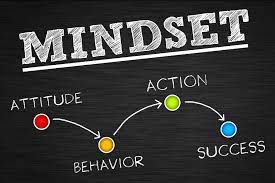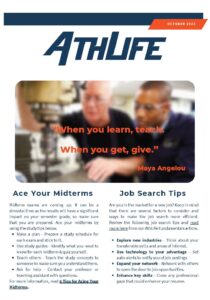When learning online, there are some technical obstacles you could face. Listed below are common issues and resolutions to help you move forward with online learning.
Wi-Fi Connection – More than likely, you will encounter a Wi-Fi connection issue at some point. If you are unable to connect to the internet, first make sure you are connected to Wi-Fi. Depending on if you have a Mac or PC, look for the Wi-Fi symbol. ![]() On a Mac, this will be in the top right-hand corner and on a PC it will be in the bottom right corner. If the bars are not there, then you are not connected to Wi-Fi.
On a Mac, this will be in the top right-hand corner and on a PC it will be in the bottom right corner. If the bars are not there, then you are not connected to Wi-Fi.
- Try turning off your Wi-Fi connection and turning it back on
- Check to see if your phone is connected to Wi-Fi
- Consider resetting your router at home by disconnecting it and plugging it back in
Sound – If you are trying to listen to a video presentation from your professor and are unable to hear sound, there are a few options to help resolve your problem.
- Go to your Settings, select “Sound” and ensure that the volume is up and not turned off
- On a PC you will see the sound icon .
 If you click it, you can adjust the volume or mute all sounds
If you click it, you can adjust the volume or mute all sounds
Excel – If you are working in Excel and find yourself not being able to type into a cell, try pressing the “Escape” button. This will help unlock the document and should allow you to type freely again.
Computer Freezing – If your computer freezes or is acting up, most of the time simply turning your computer off then back on will do the trick. You can also try hitting “Ctrl”, “Alt” and “Del” keys at the same time. A menu called “Task Manager” will appear, you can then highlight the application you are experiencing issues with (it will say “Not Responding”) and click “End Task”.
Computer Not Turning On – If your computer is not turning on, ensure that all cables are plugged in the power source and computer. If it still will not turn on, try using another outlet to plug into. If you have a PC that you can remove the battery from, try removing the battery then reinstall it.
Slow Running Computer – If while working on your computer you notice that it is running slowly, try running fewer programs at the same time. For example, if you are working on a paper, reading emails, on your e-learning course, have Facebook and YouTube open, consider closing Facebook and YouTube to help speed up the computers’ processor. The same goes if you have four different Word documents open, consider closing all documents besides the ones you truly need.
Saving Files – When working on papers or PowerPoints, be sure you are saving work every so often or you have autosave on. This is a great practice to incorporate in the event your computer dies or randomly turns off.



